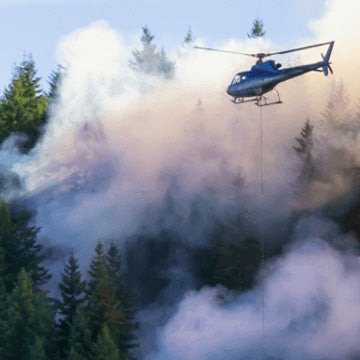Storm watchers have already marked off the first storm of the 2021 North Atlantic hurricane season, as the National Hurricane Center (NHC) named Tropical Storm Ana, which had formed east of Bermuda on May 22. And just like the first storms in each of the last six years, this storm also formed before the official start of the season on June 1. So, with the season now (officially) started, the question remains: How will the Atlantic basin follow-up on last year’s record-breaking hurricane season?
Meanwhile, in the Western North Pacific Basin, Japan did not register any tropical cyclone landfalls during 2020 for the first time in 12 years, leading to low insured typhoon losses in the region. Should we expect the same in 2021, or will there be a change in the winds?
RMS® has issued an executive summary of our 2021 Northern Hemisphere Tropical Cyclone Outlook report, which includes the North Atlantic and Western North Pacific Basins.
Sixth Consecutive Above-Average North Atlantic Hurricane Season?
There were a record-breaking number of named storms in 2020, but the North Atlantic hurricane season was fortunately not as destructive as it could have been. Insured losses from the six U.S. landfalling hurricanes were between US$19 billion and US$30 billion. This total is lower than other active seasons and equivalent to just one of the three memorable 2017 hurricanes. Major exposure centers came out of the 2020 season largely unscathed, but there were anomalies.
Hurricane Laura in August 2020 was the most impactful storm, with insured losses between US$9 billion and US$13 billion. Hurricane Delta then struck the same areas in southwestern Louisiana just 45 days later, which could have caused headaches for those trying to separate the impact of each storm.
In the absence of on-the-ground reconnaissance due to COVID-19 restrictions, RMS used aerial imagery together with machine learning and new algorithms to tag damaged buildings – and we saw buildings hit by Laura that were then consequently hit again by Delta. These virtual reconnaissance techniques helped us identify the incremental damage caused by each hurricane and enabled RMS to issue more accurate industry loss assessments.
What do the forecasters believe we are facing this year? Our executive summary, and the full tropical cyclone outlook report available exclusively for RMS clients, examines the scientific community’s most prominent forecasts, most of which anticipate above-average activity.
The National Oceanic and Atmospheric Administration (NOAA) forecast is calling for a 70 percent probability that the season will be above their updated “climate normal,” with between 13–20 named storms, six–10 hurricanes, and three–five major hurricanes (Category 3 or higher). Of the past 26 hurricane seasons, 65 percent have been designated as above normal. If the forecast for 2021 verifies, the season would be a record sixth consecutive above-normal season.
Long-term statistics also indicate that the probability of a hurricane making landfall in the U.S. increases during more active seasons, but it’s worth reemphasizing that it only takes one event to make the season a memorable or costly one.
Our report also examines the key drivers of North Atlantic Basin activity and uncertainty around which phase of the El Niño-Southern Oscillation (ENSO) will materialize during the peak months of the hurricane season. The full report for RMS clients explores the historical performance of previous forecasts and which agencies fall above or below their anticipated forecast range.
Near-Average Western North Pacific Typhoon Season?
For the first time, RMS has extended our tropical cyclone outlook to include seasonal forecasts for the Western North Pacific Basin. Overall, tropical storms and typhoons in the region last year tracked below the 30- and 70-year averages. Although there is not an official season, most activity typically occurs between May and November.
There are fewer forecasts available for this basin, but the majority call for a near-average number of tropical storms and typhoons to develop in 2021. The forecasts reflect the influence of the key seasonal oceanic and meteorological factors, including the El Niño-Southern Oscillation (ENSO) and sea surface temperatures in the Western North Pacific.
The RMS Event Response team is well prepared for the season, to support our clients with analysis before, during, and after events. We are monitoring changes in local COVID-19 restrictions; in areas where restrictions are beginning to lift, we will reintroduce in-person reconnaissance into our event response process. Combining in-person damage surveys with digital techniques provides a wealth of information unrivaled by other catastrophe model vendors, including a deep understanding of an event at both local and regional scales.
For this season, we will also continue to build upon our recent advancements and provide clients with faster and more comprehensive analytics. For instance, the ExposureIQ™ app on the RMS platform Risk Intelligence™ now puts event response and RMS HWind insights in our clients’ hands like never before. As a trusted partner, RMS is ready once again to inform critical business processes with reliable information during the year's most challenging events.
Download the RMS 2021 Northern Hemisphere Tropical Cyclone Outlook Executive Summary report.







